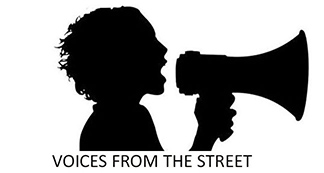Stacey Bowen, left, a Toronto single mother of two teenage daughters who is struggling financially, worries about paying for post-secondary education for daughter Desiree, 16, right, who wants to be a teacher. (Nov. 19, 2008) (VINCE TALOTTA / TORONTO STAR)
Laurie Monsebraaten
Nov 20 2008
Poverty costs Ontario a staggering $38 billion a year – and we all pay the price, says a new report that offers the first-ever analysis of the problem’s economic impact on everyone.
Although the province’s 905,000 poorest households bear the brunt of the cost, everyone feels the pinch, says the report written by a group of leading economic and public policy experts to be released at Queen’s Park today.
The social costs alone in Ontario are between $10.4 billion and $13.1 billion every year due to poverty – an amount that adds up to about $2,900 per household, according to the report.
We all pay in increased costs for health care, crime and social assistance; in the loss of tax revenue that accompanies low earnings; and in the inter-generational cycle of poor children growing up to be poor adults, it says.
“Poverty is not just about the homeless person on the sidewalk … it affects everybody and that’s what this report tries to show,” said TD Bank vice president Don Drummond, one of two economists who worked on the report.
The $25,000 report, sponsored by the Ontario Association of Food Banks, comes on the eve of the McGuinty government’s promised poverty reduction strategy expected early next month.
The report doesn’t say how much Queen’s Park would need to spend to end poverty. But it urges the government to tackle the root causes by investing in childhood development; programs to improve school performance; higher education for at-risk youth; language training and workforce integration for new immigrants; and adult literacy, education upgrading and skills development.
Given the magnitude of potential savings, the report suggests the needed mix of policies and programs to stifle the roots of poverty would likely pay for itself over time.
But if these investments aren’t made, costs will increase, it warns.
“If we are challenged by tough economic times, then this is certainly the best time to make the investment to reduce poverty,” said Adam Spence of the food bank. “Otherwise we’re going to go further into deficit.”
To maximize the return on these investments, the report calls for a complete overhaul of government policies including welfare rules that perpetuate poverty among the most vulnerable groups – the disabled, single mothers, new immigrants and aboriginals.
“We need to make changes to the institutions, public and private, that are in part responsible for poverty in the first instance,” it says.
To calculate the social costs of poverty, the group took the poorest 20 per cent of Ontario households in 2006 – those with after-tax incomes of $25,400 and less – and estimated how much more in taxes they would pay if they increased their incomes by about $18,000 — putting them in the next 20 per cent of provincial earners, but still below the median of $52,117
The report singles out Regent Park’s Pathways to Education program, which cut high school dropout rates from 56 per cent to 10 per cent and boosted post-secondary education enrollment from 10 per cent to 80 per cent.
A review of the program found that for every dollar spent, there was a $12 payoff to society, mostly in higher income taxes paid by those who completed the program.
Credit: Toronto Star

